Which the best sublimation paper for dark fabric? Sublimation printing on dark fabrics has become increasingly popular in custom apparel and textile decoration. This technique allows for vibrant and durable designs that integrate seamlessly with the fabric, providing a soft feel and long-lasting results.
The success of sublimation on dark fabrics heavily relies on using the right sublimation paper.
In this guide, I explore the key factors to consider and recommend some of the best sublimation papers for dark fabric printing.
| Image | Product | Features |
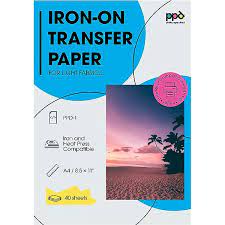 |
PPD Bulk transfers paper | Weight: 7.26 Ibs Dimensions: 2.36 x 9.17 x 12.95 in 300 sheets |
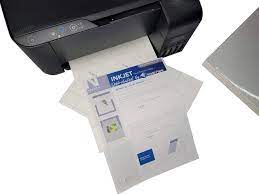 |
3G Commercial quality heat transfer paper | Size: 8.5 x 11 in 100 sheet Neenah 3G jet opaque For dark colors |
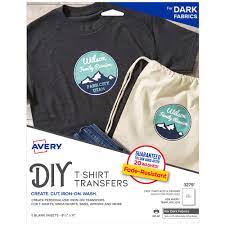 |
Avery Printable transfers paper | Size: 8.5 x 11 in Weight: 2.12 Ibs Fabric type: 100 cotton |
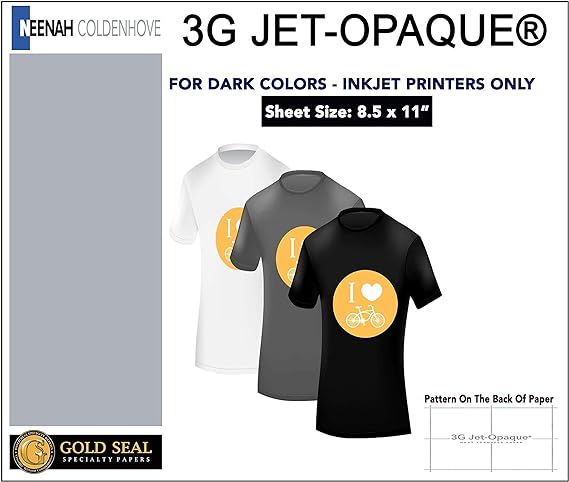 |
Neenah Coldenhove 3G transfer paper | Size: 8.5 x 11 in Sheet count: 100 Paper weight: 3.5 Ibs |
PPD Bulk transfers paper
Topping this list is the PPD Bulk and what I noticed, let’s figure it out. Ideal for dark and dark shirts, advanced technology extends to various textiles like pillowcases and aprons. Ink transfer text, images, and pictures effortlessly using a domestic iron or warmth press machine.
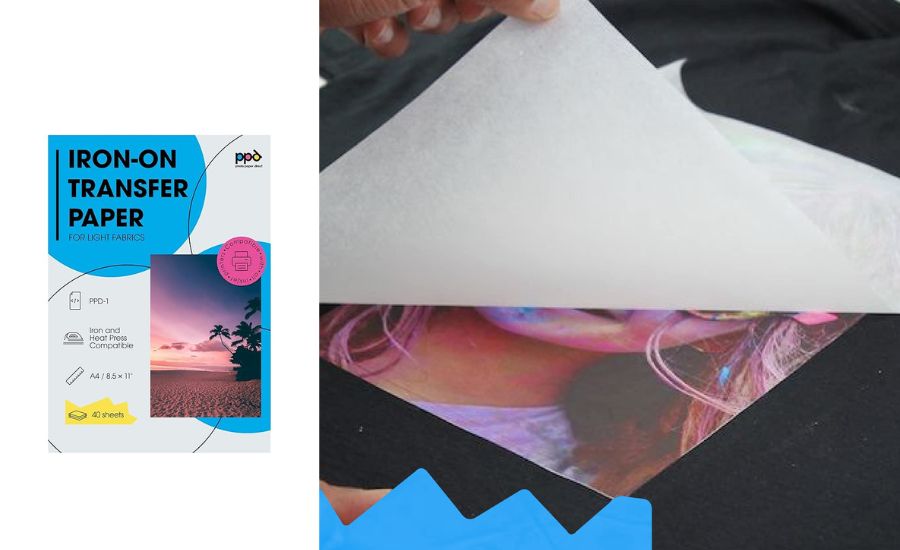
Unlike cheaper alternatives, PPD Bulk is easily cut with scissors and compatible with cutting machines.
It ensures soft, flexible, crack-free, and fully machine-washable results.
Compatible with all inkjet printers, it comes with clear instructions and a video tutorial link. Perfect for crafts, family events, and customization, each pack includes everything you need, plus a free ruler guide alignment tool template for precise design placement.
Pros
- The unique formula ensures flexible, soft, and crack-free transfers to fabric.
- A large number of sheets.
Cons
- Expensive.
3G Commercial quality heat transfer paper
The next product 3G Commercial and what I highlighted for myself. A pack of 100 sheets, each measuring 8.5″ x 11″, comes with reusable silicone-treated parchment pressing sheets, and instructions, and is conveniently packaged in a resealable bag for easy storage. This heat transfer paper, suitable for inkjet and sublimation printers, is versatile and can be applied using a warm press or a hand iron.
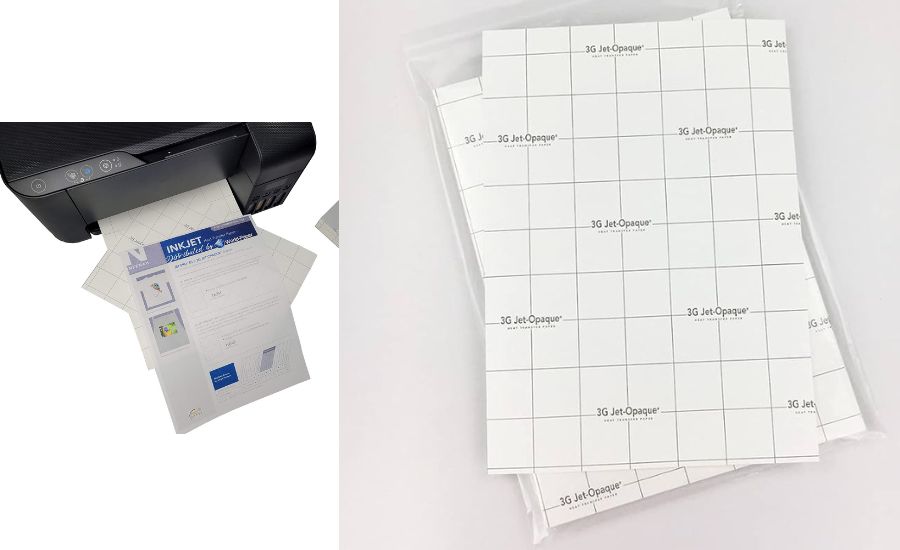
It is specifically formulated for opaque transfers, ensuring vibrant visibility on dark, bright, and vividly dark-colored fabrics. The product boasts high-quality and commercial-grade performance, making it an ideal choice for both home and business applications.
Pros
- This is a heat transfer paper designed for use with an inkjet printer and can be applied using either a warmth press or an iron.
- The paper is specially designed for opaque transfers, providing brilliant visibility on dark, bright, and rich fabrics.
- Suitable for home and commercial use.
Cons
- Expensive.
Avery Printable transfers paper
The 3rd product on the best sublimation paper list is Avery Printable. This best sublimation paper can design and personalize your printable iron-on transfers with these 8.5″ x 11″ sheets, perfect for customizing items such as t-shirts, aprons, pillowcases, bags, hats, tank tops, and more.
Specifically designed for use on black and dark-colored fabrics 100% cotton, this heat transfer paper has a unique formulation that creates a bond with the fabric, resulting in a soft, stretchable, machine washable, and fade-resistant finish.
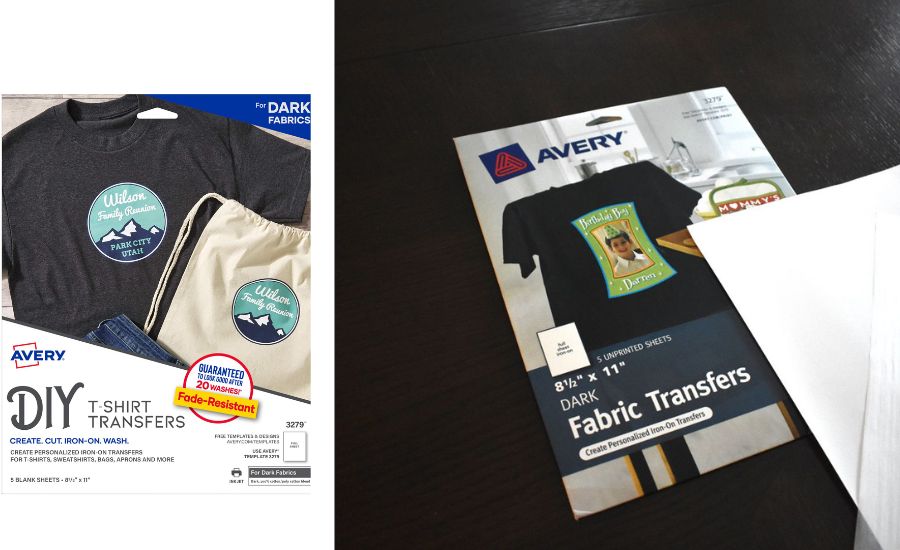
Effortlessly transfer text, images, and photos onto black or dark-colored fabrics using a standard household iron or a professional warmth press.
Each pack includes full instructions for fabric transfer, ensuring ease of use.
This versatile product allows you to print your creations at home using an inkjet printer. Simply print and cut the iron-on sublimation transfer paper and lighter paper with scissors or use an electric cutting machine like the Silhouette or Cricut for precision and creativity.
Pros
- Reliable and high-quality products.
- It is compatible with various sublimation printers, providing more options to users.
- Each package includes instructions, making the application process easy.
Cons
- Limited wash resistance.
Neenah Coldenhove 3G transfer paper
My top list is completed by paper from the Neenah brand and here is my feedback. Inkjet-compatible heat transfer paper is versatile, and suitable for application using a warmth press or a regular hand iron.
This opaque transfer is designed to display vividly on dark, bright, and/or vibrant colored fabrics.
It boasts high quality, meeting commercial standards for heat transfer vinyl.
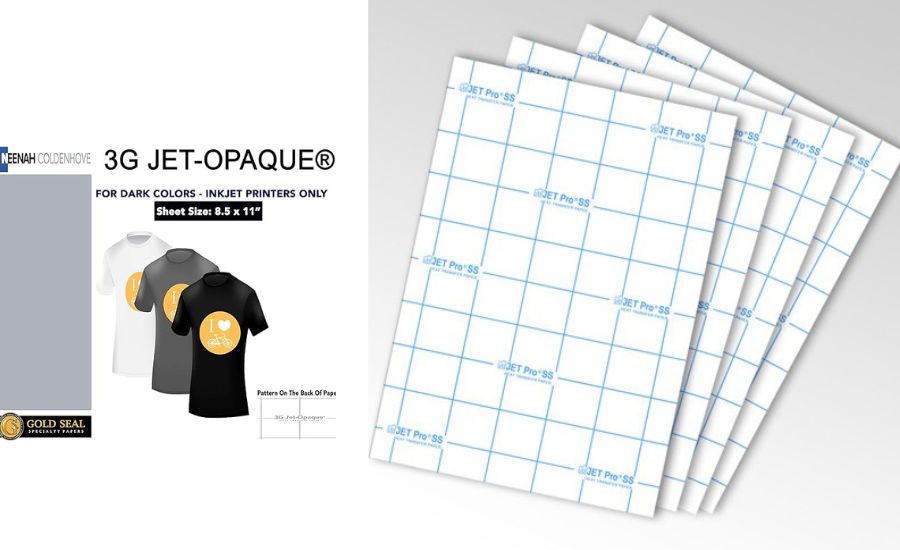
The 100-sheet pack in 8.5 x 11 size includes reusable silicone-treated parchment pressing sheets, and comprehensive instructions, and is thoughtfully packaged in a resealable bag for convenient storage. Ideal for home and business applications.
Pros
- Its ability to be used on a variety of fabric types can make it a versatile choice for a variety of projects.
- Paper dries quickly after printing.
Cons
- Depending on location, Neenah may be harder to find or more expensive due to shipping.
Factors to consider when choosing sublimation paper
Handling sublimation paper requires care and attention to ensure optimal results in the sublimation printing process.
Here are some tips for handling a sub-sublimation paper:
- Store in a cool, dry place. The best sublimation paper is sensitive to moisture. Store it in a cool, dry place to prevent the thinner paper from absorbing humidity, which can affect print quality.
- Handle with clean hands. Ensure your hands are clean and dry when handling a sub sublimation paper to prevent oils, dirt, or moisture from transferring to the thinner paper.
- Use gloves. Wear gloves when handling a sub-sublimation paper to minimize direct contact with the surface. This helps avoid potential contamination and ensures a clean printing surface.
- Avoid fingerprints. Fingerprints can interfere with the sublimation process. Handle a sub sublimation paper by the edges or use gloves to prevent leaving fingerprints on the printable surface.
- Print on the correct side. The best sublimation paper typically has a printable side and a backside. Ensure you print on the correct side to achieve the best color transfer results. The printable side is usually brighter and smoother.
- Maintain printer settings. Set your sublimation printer to the recommended settings for sublimation paper. This includes adjusting the print quality, ensuring proper color management, and selecting the correct light sublimation paper type in the sublimation printer settings.
- Use high-quality inks. Choose high-quality inks compatible with your sublimation printer. Quality inks contribute to better color vibrancy and durability of the transferred image.
- Allow prints to dry. After printing, allow the sublimation prints to dry completely before handling. This helps prevent smudging or transferring of ink absorption.
- Handle prints carefully. When prints are dry, handle them carefully to avoid any damage to the printed surface. Ensure that the prints do not come into contact with each other before sublimation.
- Protect against contaminants. Protect the printed the best sublimation paper, parchment paper, and lighter paper from contaminants, such as dust or dirt, during the transfer process. A clean working environment is crucial for successful sublimation.
- Follow the transfer instructions. Adhere to the manufacturer’s instructions for sublimation transfer paper, including recommended temperature, pressure, and transfer time settings for your warmth press.
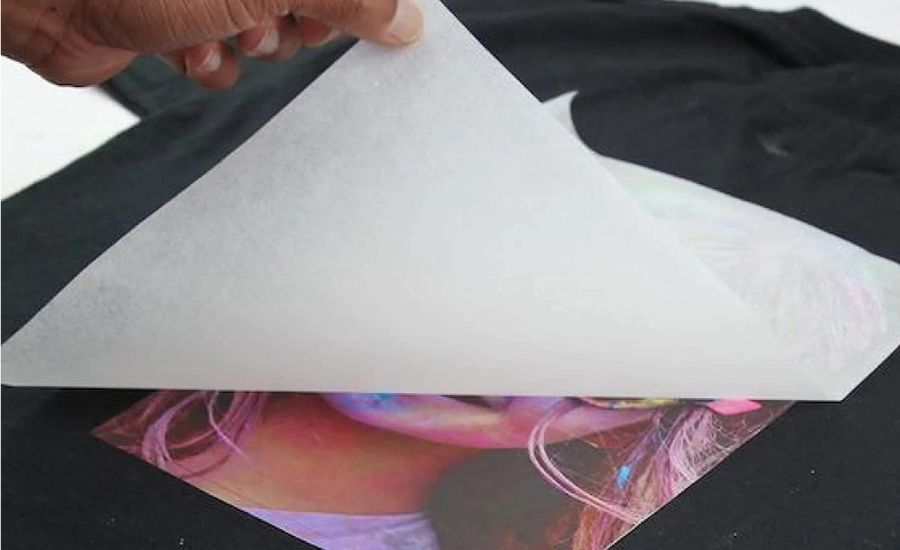
Steps to sublimate dark fabric
Sublimating on dark fabric requires some adjustments to the traditional sublimation process, as inks are typically transparent and work best on light-colored fabrics.
There are specific most sublimation papers designed for use on dark materials.
Here’s a general guide on how to sublimate on dark fabric:
Materials Needed:
- Dark fabric.
- Sublimation ink.
- Sublimation paper for dark materials.
- Heat press.
- Protective paper or Teflon sheet.
- Heat-resistant tape.
- Lint roller or adhesive remover.
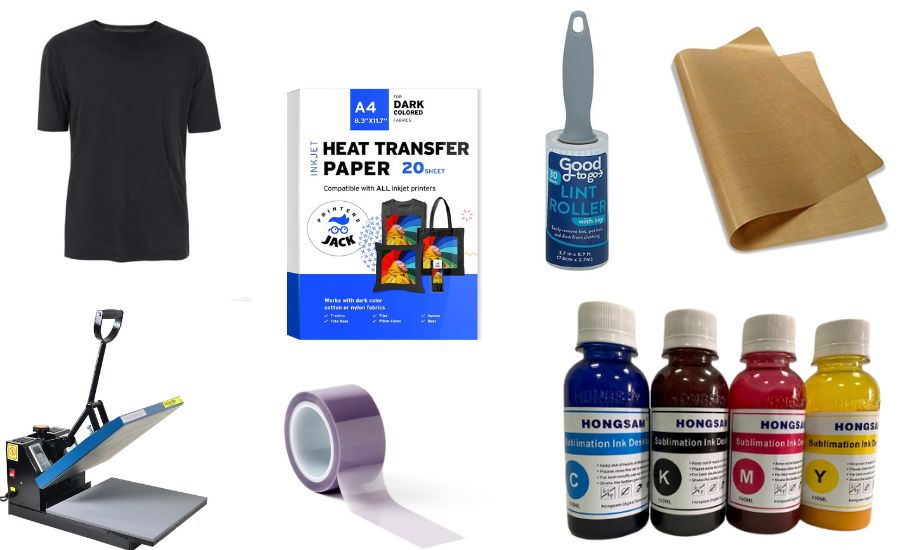
Steps:
- Choose the right sublimation paper for dark. Use sublimation paper for dark explicitly designed for dark materials. These sublimation papers typically have a white or light-colored background to ensure vibrant colors on dark textiles.
- Print the design. Print your design using sublimation inks onto the sublimation paper. Ensure that your printer is set up for sublimation printing and that you mirror the image before printing.
- Prepare the fabric. Ensure your fabric is clean and free of lint or debris. Use a lint roller or adhesive remover if needed.
- Place the sublimation paper for dark on the fabric. Position the printed sublimation paper with the design facing down onto the dark fabric. Secure the thicker paper in place with heat-resistant tape if necessary.
- Cover with protective paper or Teflon sheet. Place a protective paper or Teflon sheet over the sublimation paper and fabric. This helps protect your heat press and ensures even heat distribution.
- Set up the heat press. Preheat your heat press machine to the recommended temperature for sublimation on dark materials. Refer to the guidelines provided by the sublimation paper manufacturer.
- Press the fabric. Once preheated, place the fabric with the sublimation paper and protective sheet in the heat press. Apply even pressure and heat for the recommended time, as specified by the sublimation paper instructions.
- Peel off the sublimation paper. After pressing, carefully peel off the sublimation paper while the fabric is still warm. Be cautious not to smudge the design.
- Allow to cool. Allow the fabric to cool completely before handling. The sublimation process continues as the fabric cools.
- Final inspection. Inspect the transferred design for vibrancy and quality. If needed, follow any additional care instructions provided by the sublimation paper manufacturer.
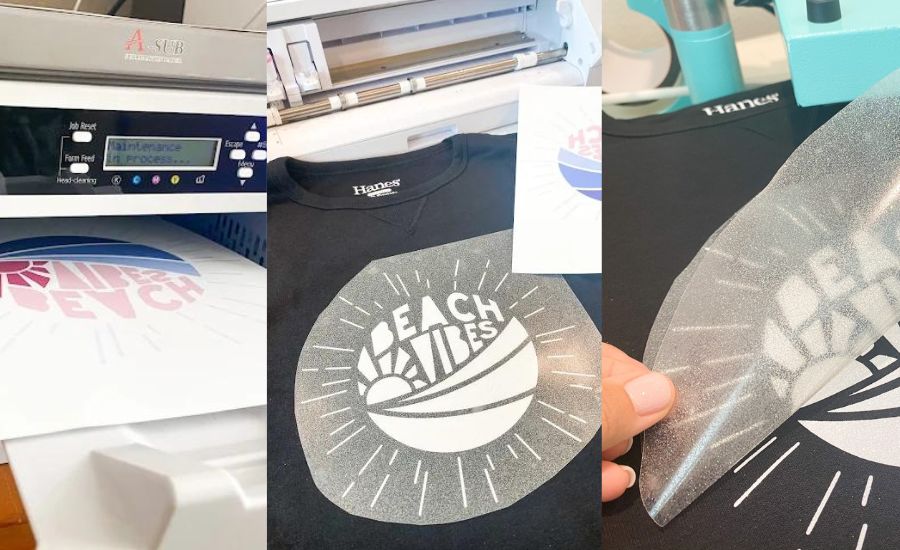
Can sublimation paper be used on dark fabric?
Sublimation paper is typically designed for use on light-colored or white fabrics. The reason is that sublimation inks are transparent, and they rely on the base color of the fabric to produce the final colors in the image.
When applied to dark materials, the colors may not appear vibrant, and the design may be less visible. For dark materials, it’s often recommended to use heat transfer vinyl specifically designed for dark garments.
Does iron on transfer paper work on black shirts?
Iron-on transfer paper is designed so that sublimation papers work on dark materials, including dark shirts. Iron-on transfer paper for dark materials usually has a white background, allowing the colors of the design to stand out against dark backgrounds.
When using iron-on transfer paper on dark shirts, it’s essential to follow the manufacturer’s instructions regarding printing, cutting, and heat application to achieve the best results.
What sublimation paper should I use?
The choice of sublimation paper depends on your specific needs. If you’re working with dark materials, it’s advisable to use sublimation paper that is specifically formulated for dark garments. Look for sublimation papers with high coating quality, quick drying times, and compatibility with your sublimation ink. Some popular options include Neenah sublimation.
What is the difference between sublimation paper and heat transfer paper?
The primary difference lies in the printing process and the type of ink used. Sublimation paper is designed for use with sublimation inks, which, when heated, turn into a gas and bond with the polyester fibers in the fabric.
Heat transfer vinyl, on the other hand, is coated with a layer that melts and adheres to the fabric when heat is applied. heat transfer vinyl is suitable for various fabric types, including cotton, and is commonly used with pigment or dye-based inks.
What sublimation paper is best for Т-shirts?
When choosing sublimation paper for T-shirts, consider factors such as coating quality, drying time, and compatibility with your sublimation ink. Neenah and HTVRONT sublimation paper are popular choices for T-shirts.
Ensure that the paper is designed for use on fabrics, has good color reproduction, and provides a soft feel on the final garment. Follow the manufacturer’s guidelines for heat press settings and applications.
How many types of sublimation papers are there?
There are primarily two types of sublimation papers: one for light-colored fabrics and another specifically designed for dark-colored fabrics. The choice depends on the color of the material you are sublimating onto.
Conclusion
The success of sublimation printing on dark materials relies on choosing the correct sublimation paper. Consider factors like coating quality, weight, drying time, compatibility with ink, resolution, size options, and brand reputation when making your selection. Experimenting with different sublimation papers may be necessary to find the one that best suits your specific printing needs and equipment.
After evaluating all the advantages and disadvantages, the best choice can be considered PPD Bulk transfer paper.

Hi, I’m artist and sublimation printing expert. Born and raised in Anchorage, Alaska, I had passion for photography and painting from my childhood. I started my career as a sublimation print operator for a local printing company in 2012. The role exposed gave me lots of practical knowledge about printing process, from managing color profiles to ensuring print quality on various materials.

Leave a Reply